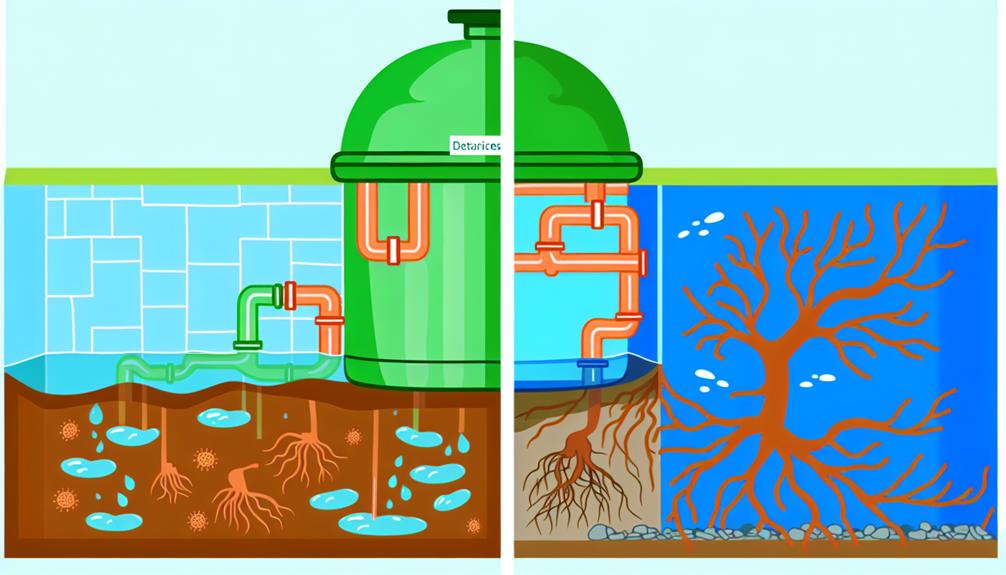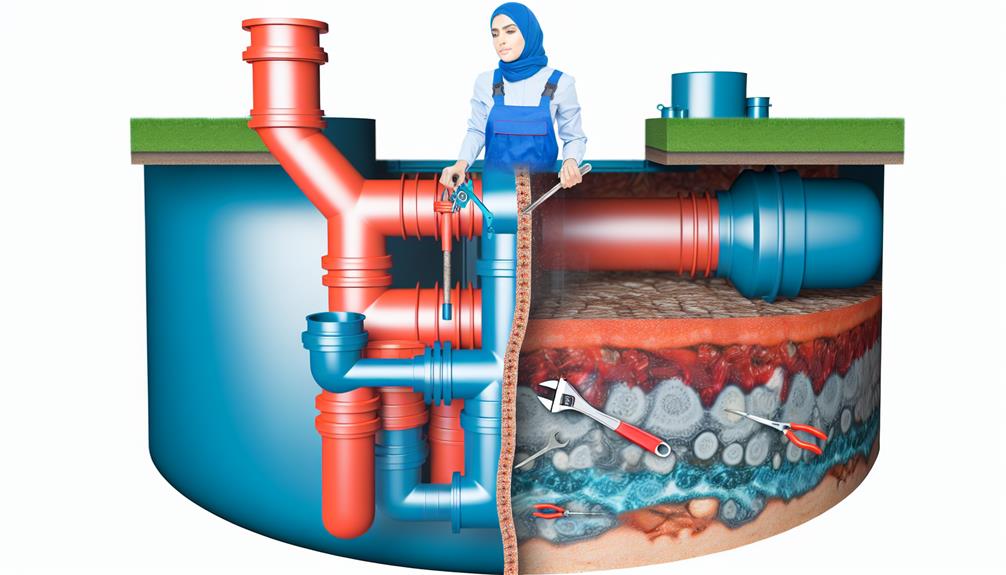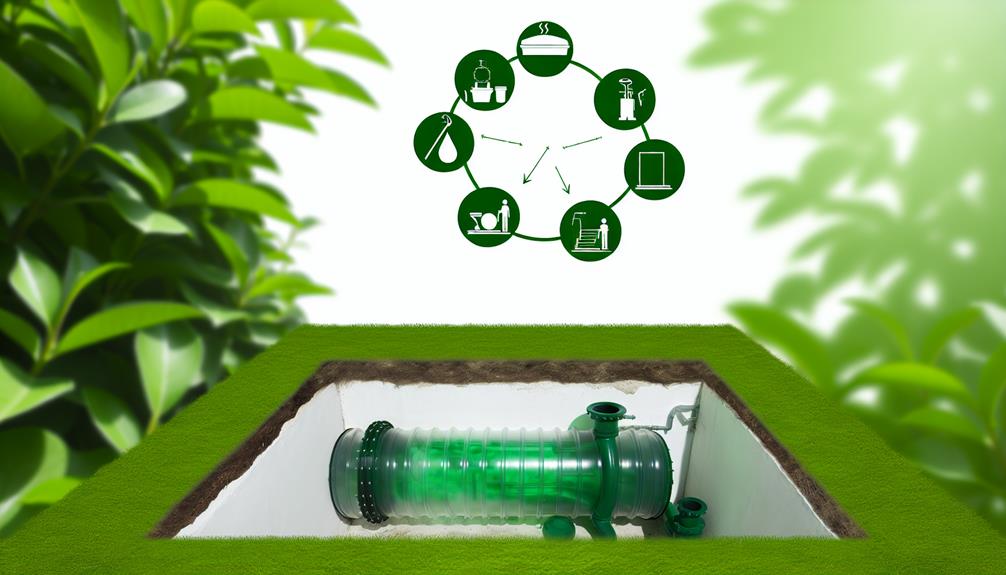Discover how to protect your septic system from breakdown with...
Read MoreYou & Your Septic Tank
Solving Typical Septic Tank Issues: A Guide
Our professional septic service team offers comprehensive septic tank pumping services to keep your system running smoothly. Get a FREE Quote Today.

Solving Typical Septic Tank Issues: A Guide
Sure, who doesn’t love a good septic tank issue to brighten their day? You’ve got to admit, there’s something oddly satisfying about tackling a problem that’s literally in the bowels of your home.
But, let’s face it, septic tank issues can be a downright dirty business. Clogged pipes, overflowing tanks, and those unpleasant odors that make you want to move to another zip code. You’ve had enough, and you’re ready to take action.
But where do you start? Well, consider this your personal guide to understanding, troubleshooting, and ultimately solving those stinky septic tank problems. Stick with us, and soon you’ll be able to solve these issues without so much as a second thought.
Key Takeaways
- Regular septic tank pumping every three to five years helps prevent sludge buildup and clogs.
- Troubleshooting persistent clogs can involve using a plumber’s snake or enzyme-based drain cleaners, but professional septic tank service may be necessary.
- Solving septic tank overflows requires identifying the cause, calling in professional septic system services to pump out excess waste, and implementing preventative measures.
- Preventing future septic problems involves regular inspections, practicing water conservation, avoiding flushing non-biodegradable items and harmful chemicals, and using bacteria additives carefully.
Recognizing Common Septic Tank Issues

In light of maintaining a healthy and functional septic system, it’s critical that you’re able to identify common septic tank issues early on to prevent costly repairs or replacements.
Your first line of defense in tank maintenance is recognizing signs of malfunction. It’s essential to pay attention to certain indicators that suggest your septic tank needs attention.
One of the most common signs of a problem is the presence of septic smells. If you notice an unusual, foul odor in your house or around the drain field, it could be a sign of a tank issue. This smell is often the result of a tank that’s too full or a clog in the system. It’s crucial to address this immediately to avoid a total system failure.
Another sign to look out for is slow drainage. If your sinks or tubs are draining slower than usual, it can often indicate a problem with your septic system. Similarly, if there’s a sudden change in the color or health of the grass over your septic tank, it’s another indicator that something’s off.
Understanding Septic Tank Pumping
After spotting these warning signs, you’ll need to understand the process of septic tank pumping, a crucial maintenance task that can help resolve and prevent such issues. This process involves removing the sludge, scum, and effluent from the tank to prevent the system from backing up or failing.
To make the process clearer, here’s a table detailing the steps, their descriptions, and cost implications:
| Step | Description | Cost Implication |
|---|---|---|
| Inspection | Checking the tank’s components | Incurs a separate fee |
| Pumping | Removing sludge and scum | Depends on tank size and waste volume |
| Cleaning | Washing the tank’s interior | Included in pumping cost |
| Repair | Fixing any detected damages | Extra charge based on damage severity |
| Report | Providing a detailed service report | Typically included in service fee |
Your pumping schedules largely depend on your household size, tank size, and total wastewater generated. Typically, a septic tank should be pumped every three to five years. However, if you have a garbage disposal, or a high number of occupants in your home, you might need more frequent service. Understanding these aspects can help you manage your septic tank effectively and avoid costly repairs.
Troubleshooting Persistent Clogs

Despite regular maintenance, you may still encounter persistent clogs in your septic system, a common issue that can prove quite challenging to resolve. Understanding clog causes is crucial in troubleshooting. Clogs often occur due to non-biodegradable items, excessive use of paper products, or an accumulation of fats, oils, and grease. Additionally, heavy rainfall can overburden your system, leading to clogs.
To effectively deal with these clogs, consider various drainage solutions. Firstly, try using a plumber’s snake to dislodge the clog physically. This tool can reach deep into your system and break up blockages. Alternatively, enzyme-based drain cleaners can be used to dissolve organic material causing a clog. However, they’re not suitable for all types of blockages.
For persistent clogs, a professional septic tank service may be necessary. They can use specialized equipment, such as hydro-jetting machines, to clear stubborn blockages. Furthermore, ensure your septic tank is pumped regularly to prevent sludge build-up.
Solving Septic Tank Overflows
When your septic tank overflows, it’s not only a nuisance but a serious hazard that requires immediate attention and a well-planned approach to resolve. Overflow management is critical in these instances, and emergency responses should be deployed swiftly.
This process can be broken down into four key steps:
- Identify the cause: Overflows could be caused by blockages, excessive water use, or even a malfunctioning septic system. It’s vital to determine the root cause to address the issue effectively.
- Call in the professionals: Septic system services have the necessary equipment and expertise to handle overflows. They can pump out the excess waste, ensuring safety and preventing further damage.
- Implement preventative measures: Regular maintenance checks can catch potential issues early. Also, be mindful of your water usage to avoid overloading the system.
- Upgrade if necessary: If overflows become a recurring problem, it might be time to consider upgrading to a larger or more efficient system.
Preventing Future Septic Problems

While managing septic tank overflows is crucial, it’s equally important to proactively curb such issues from arising in the first place by implementing effective preventative measures. Septic system maintenance is the key to preventing septic problems. Regular inspections and pumping every three to five years can prevent sludge buildup and system failure.
Furthermore, adopting beneficial practices such as water conservation can reduce the load on your septic system. Avoid flushing non-biodegradable items and harmful chemicals that might disrupt the septic system’s balance.
Another aspect to consider is the use of bacteria additives. These are products that boost the bacteria population in your septic system. The bacteria additives benefits are numerous: they help to break down waste more efficiently, prevent unpleasant odors, and reduce the likelihood of blockages. However, it’s critical to choose the right additives, as some products may contain harmful chemicals.
Ultimately, maintaining your septic system involves a combination of regular professional maintenance, responsible household habits, and the use of beneficial products like bacteria additives. By taking these steps, you can minimize the risk of future septic problems and extend the life of your system.
Conclusion
With this guide, you’re now equipped to tackle typical septic tank issues head on.
You might think, ‘But I’m not a plumber!’ Don’t worry! With a little patience and diligence, you can handle common problems and prevent future ones.
Remember, understanding how your system works, regular pumping, effective troubleshooting, and proper management can keep your septic system running smoothly.
You’ve got this!
You may also like...
Why Are DIY Fixes Essential for Septic Tank Pumping?
Tap into the importance of DIY fixes for septic tank...
Read MoreUnveiling the Average Costs of Septic Tank Pumping
Master the mysteries of septic tank pumping costs and avoid...
Read More
The Best Septic Tank Pumping Services Near You

Answer Some Questions
Let us know about your needs so we can find you the right septic tank pros.

Get Quotes
We will put you in touch with the right septic tank pros for your job and location.

Hire Right
Compare quotes, message or call pros, and hire only when ready.



